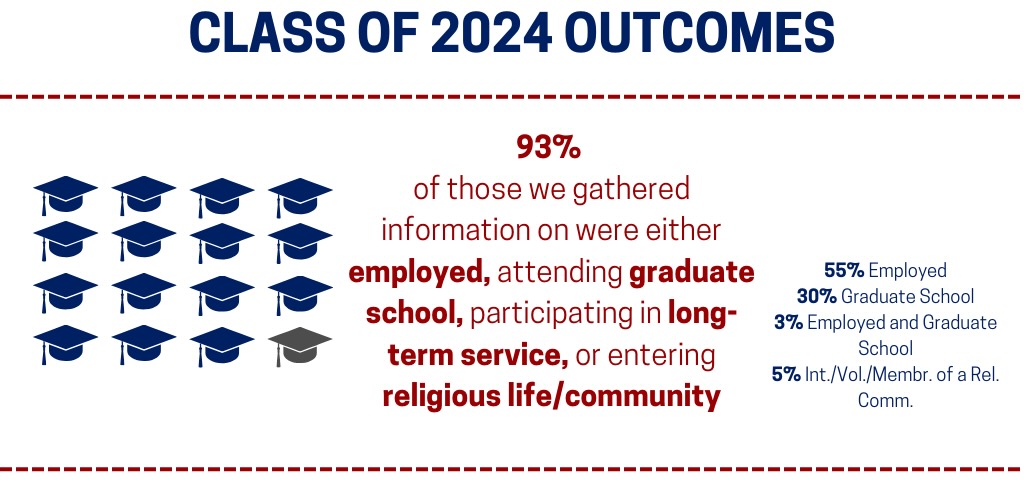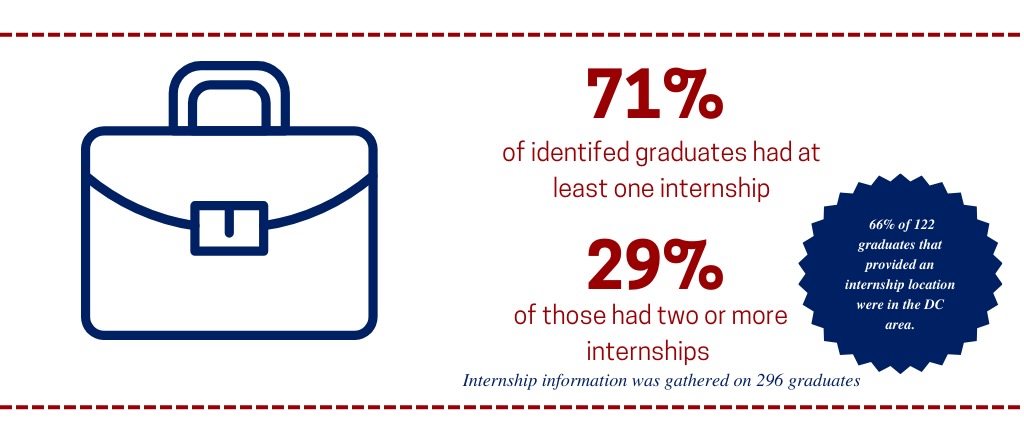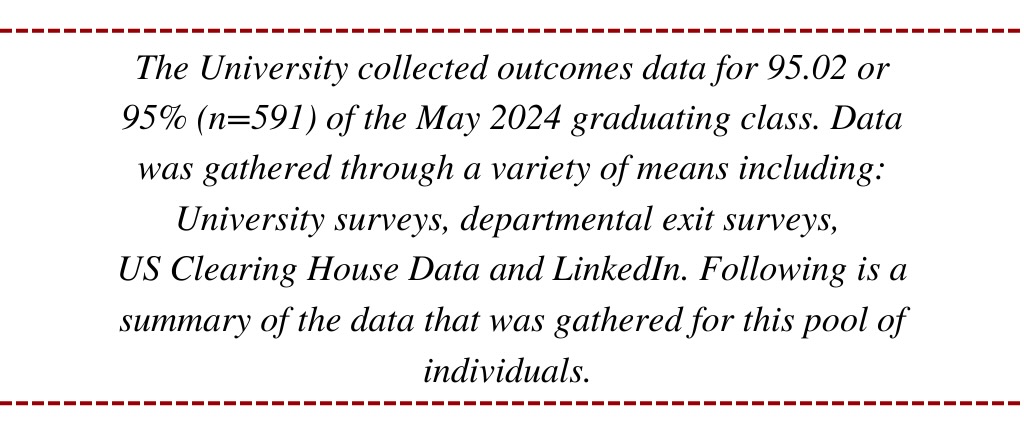
Outcomes data is from the May 2024 undergraduate graduating class. Results are based on a combination of University surveys, departmental surveys, and social media research.
Information below is available for accessible download.What Catholic U Students Are Doing
What Catholic U Students Are Earning
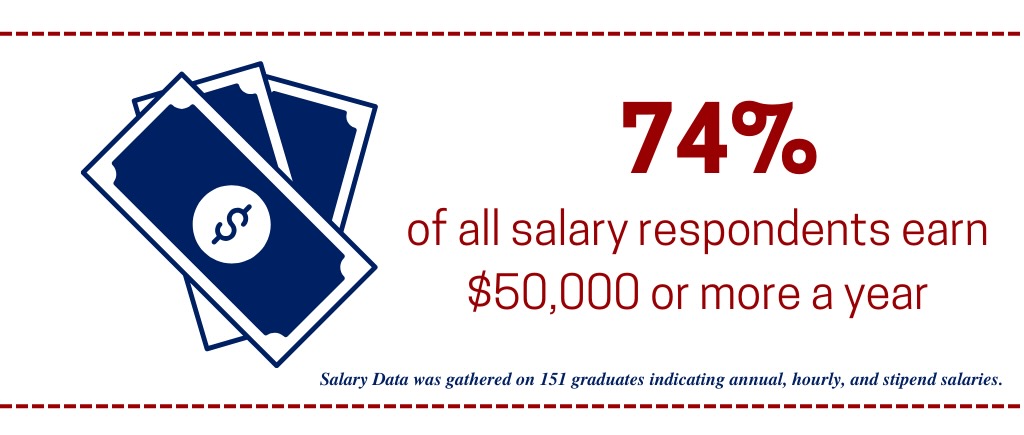
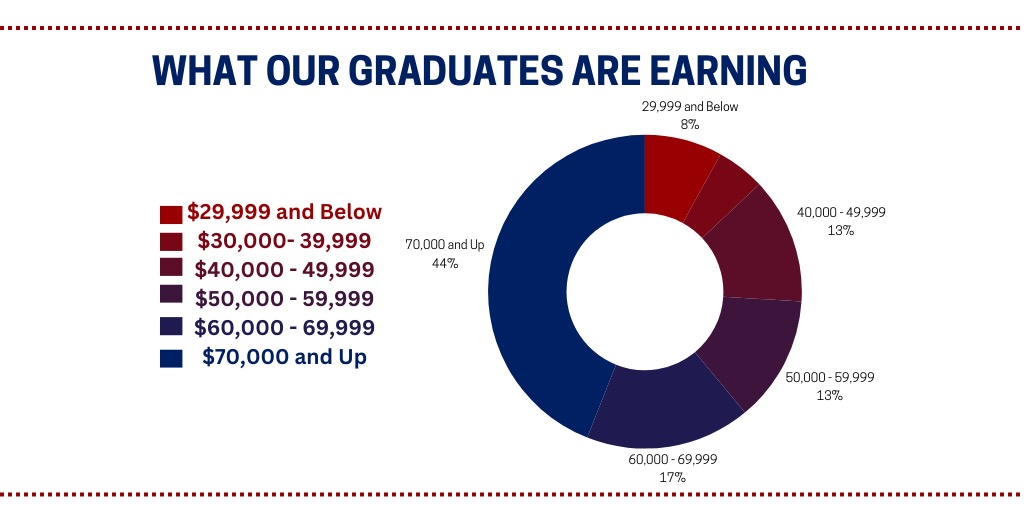
Where Catholic U Students Interned
-

2023 Student Outcomes
Learn More -

2022 Student Outcomes
Learn More -

2021 Student Outcomes
Learn More -

2020 Student Outcomes
Learn More -

2019 Student Outcomes
Learn More

